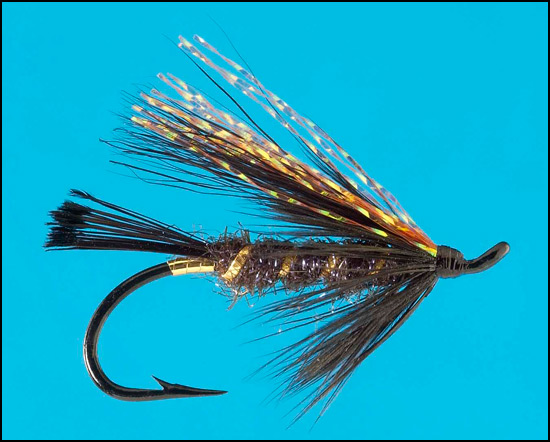
On The Fly
August 2010
"Fly tying is a school from which we never graduate"
TYING NEWS
The Southern Oregon Fly Tyers invite you to attend their meetings the second Tuesday
of each month. There is no meeting in August. The next meeting is September 14, 2010. The meetings
start at 6:00 PM, at the Madrone Hill Mobile Home Park community building near Gold Hill. Bring a friend,
come early so you don't miss anything, and stay late. Tyers need not be experienced, and those with all
levels of skill are welcome. Each meeting a member is encouraged to demonstrate a new or different skill,
from simple to difficult. For more information, call Dan Kellogg at 773-4724.
DIRECTIONS: Take Gold Hill Exit #40, off of I-5 and go west, toward Jacksonville, 1.3
miles, until you reach the brick entrance way to the Madrone Hill Mobile Home Park on the right. You’ll
pass a golf course parking lot on Your left shortly after leaving the freeway. After you turn right into the
mobile home park, proceed to the community building which is located about 100 yards ahead on the left. The
address is 8401 Old Stage Rd. Please park your vehicle on the bare dirt in the parking lot to avoid the
wooden septic covers in the grass.
PATTERN OF THE MONTH - Black Rogue

Hook: Daiichi 2441, std. salmon/steelhead, size 10-4
Thread: 6-0 black.
Tag: Flat gold tinsel, medium.
Tail: Black golden pheasant tippet
Rib: Oval gold tinsel, medium.
Body: Black synthetic dubbing.
Wing: Orange crystal flash over black kid goat.
Head: Black thread.
Tying Instructions
Step 1 Mash the barb and mount the hook in the vise.
Step 2: Start the thread two eye widths behind the eye and lay down an even thread base to just above the
hook point.
Step 3: Tie in the flat tinsel and wrap rearward to just above the hook bard, reverse direction and wrap
forward back to the tie-in position. Tie off and trim.
Step 4: Select a small bunch of tippet fibers, measure them to be about 1/2 the shank length, and tie them
on top of the shank just above the hook point. Do not trim the butts, tie them down along the top of the
shank up to the original tie-in point with spiral wraps. This avoids a bump without building up bulk. Trim
and spiral back to the base of the tail.
Step 5: Tie in the oval tinsel leaving it hang to the back for use later as the rib.
Step 6: Dub the thread with the synthetic dubbing and wind forward forming a even body up to the original
tie-in spot. Tie off and trim excess.
Step 7: Wind the oval tinsel forward in 5 even wraps to the front of the body. Tie off and trim.
Step 8: Select a black hackle feather with barbs as long as the body and tie in by the tip. Make about 3 or
4 turns, then tie back on the stems until the barbs reach a 45 degree angle. Tie off and trim.
Step 9: Select a small bunch of black hair, measure so they reach half way down the tail, trim to length,
and tie the bunch on top of the shank just in front of the hackle. Secure with firm wraps.
Step 10: Select a dozen or so strands of orange crystal flash and tie in just in front of the wing. Leave
the strands long as they can be trimmed to length later.
Step 11: Form a nice small tapered thread head, whip finish, trim the flash the same length as the black
wing, cement, and admire your work.
The Black Rogue is the creation of the late Al Brunell, master tier and developer of
some of the most productive patterns for our Rogue River. This classic style steelhead fly has a dark
silhouette with just enough flash to attract attention. Smaller sizes down to #10 seem to be more effective
in our home water than on other rivers. A traditional wet fly swing is most affective.
TYING TIPS
Give yourself plenty of room for wing, over-wing and head on your initial tie-in
position. You can't hide start and stop points on this one due to the slim body profile. Butts and tags
should be tied in the full length of the body. Keep materials somewhat sparse, especially on smaller hook
sizes. I prefer Poly yarn on a spool . On larger sizes use a dubbing loop to achieve some fullness in the
body. I like to use softer fibers for the hackle to get movement, not flotation. Kid goat is getting hard
to find, so for the hair wing you can substitute calf-tail, buck tail or black bear. To achieve a small
head, keep your thread wraps to a minimum and place one material right next to the next material. Try not
to stack them. So tie some up, give them a test flight and let me know how you do.
Tie One On,
Dan Kellogg (you can contact me at FLYGUY@EZNORTHWEST.COM)